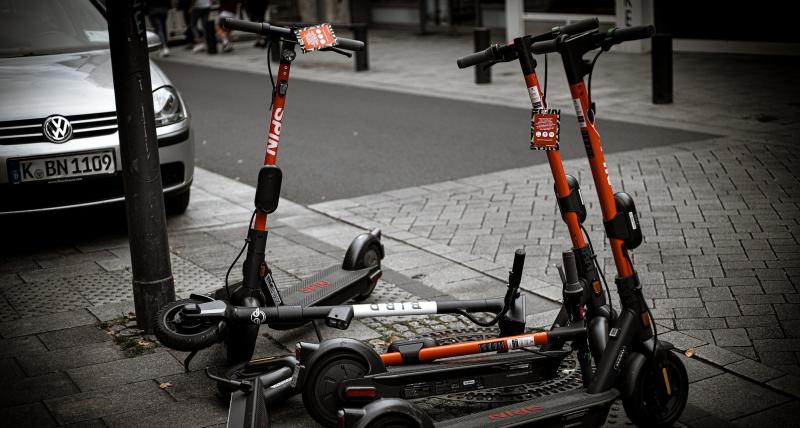Your electric bike’s battery is one of its most vital components, powering your rides and influencing the bike’s range, performance, and reliability. Proper maintenance and care can significantly extend the life of your battery, helping you get the most out of your electric bike (e-bike) and ensuring that it runs efficiently for years to come. In this guide, we’ll cover how to maintain and care for your e-bike battery, from charging tips to storage advice and general maintenance.
Why Battery Care Is Important
Electric bike batteries are typically made from lithium-ion cells, which are lightweight, energy-efficient, and long-lasting. However, like any rechargeable battery, their capacity can degrade over time if not properly cared for. Regular maintenance helps preserve battery life, increases the number of charge cycles, and ensures that your e-bike operates at peak performance.
Top Tips for Maintaining Your Electric Bike Battery
1. Charge Your Battery Properly
Charging your e-bike battery correctly is one of the most important aspects of battery maintenance. Here’s what you need to know:
- Avoid Overcharging: Leaving your battery plugged in for too long after it’s fully charged can lead to battery degradation. Most modern e-bike chargers are designed to stop charging once the battery is full, but it’s still a good idea to unplug the charger once charging is complete.
- Don’t Fully Discharge the Battery: It’s best to avoid letting your battery completely run out of charge. Lithium-ion batteries last longer when they’re kept between 20% and 80% charge. Frequent full discharges can shorten the battery’s overall lifespan.
- Charge After Each Ride: Try to recharge your battery after each ride, especially if it has dropped below 50%. Keeping the battery topped up helps maintain its overall health and longevity.
- Use the Right Charger: Always use the charger that comes with your electric bike or a manufacturer-approved charger. Using a non-compatible charger can damage the battery and affect its performance.
2. Store Your Battery Correctly
Proper storage is crucial for extending the life of your e-bike battery, especially if you’re not using your bike for extended periods, such as during winter months. Follow these storage tips to keep your battery in good condition:
- Store in a Cool, Dry Place: High temperatures can cause lithium-ion batteries to degrade faster. Avoid leaving your battery in direct sunlight or near heat sources. The ideal storage temperature is between 10°C and 20°C (50°F to 68°F).
- Keep Battery Partially Charged: If you plan on storing your bike for a while, ensure the battery is around 50% charged. Storing the battery when it’s fully charged or completely drained can reduce its lifespan.
- Remove the Battery from the Bike: If possible, remove the battery from the bike when storing it. This helps prevent potential discharge from exposure to cold or hot temperatures and reduces wear on the bike’s electrical components.
3. Protect Your Battery from the Elements
Your electric bike’s battery can be vulnerable to weather conditions such as rain, extreme heat, and cold. Here are some ways to protect it from the elements:
- Avoid Riding in Heavy Rain: While most e-bike batteries are water-resistant, prolonged exposure to heavy rain or deep puddles can damage the battery casing or lead to moisture getting inside.
- Invest in a Waterproof Cover: If you frequently ride in wet conditions, consider using a waterproof cover for your battery. This provides an extra layer of protection and helps prevent water damage.
- Don’t Leave Your Bike in Extreme Temperatures: Heat and cold can affect battery performance. If you’re parking your bike for extended periods, avoid leaving it in direct sunlight or freezing conditions. Extreme cold can temporarily reduce your battery’s capacity, while extreme heat can permanently degrade the cells.
4. Perform Regular Battery Maintenance
Regular maintenance can go a long way in ensuring your battery stays in good working order. Here are some key steps you can take to keep your battery in top shape:
- Inspect for Damage: Check the battery regularly for signs of wear and tear, including cracks, dents, or damage to the casing. If you notice any physical damage, stop using the battery immediately and contact the manufacturer for repair or replacement advice.
- Keep Battery Contacts Clean: The contacts where the battery connects to the bike should be kept clean and dry. Use a dry cloth to wipe away any dirt, dust, or moisture that may accumulate over time.
- Balance the Cells: Some high-quality e-bike batteries come with a built-in battery management system (BMS) that automatically balances the cells. However, if your battery doesn’t have this feature, it’s a good idea to let the battery fully charge and discharge every few months to help balance the cells and maintain optimal performance.
5. Extend Battery Range with Efficient Riding
One of the best ways to maintain your e-bike battery is to ride efficiently, reducing strain on the motor and preserving battery life. Here’s how to maximize your range:
- Use Pedal Assist Mode: Most e-bikes come with multiple levels of pedal assist. Using a lower level of assist on flat terrain or when you’re not in a hurry can significantly extend your battery range.
- Avoid Sudden Accelerations: Accelerating quickly from a stop or riding at full throttle for extended periods can drain your battery faster. Try to maintain a steady pace to conserve energy.
- Keep Tires Properly Inflated: Under-inflated tires can create extra drag, making the motor work harder and draining the battery faster. Regularly check and inflate your tires to the recommended pressure.
6. Know When to Replace Your Battery
No battery lasts forever, and eventually, you’ll need to replace your e-bike’s battery. Here are some signs that it might be time for a new one:
- Noticeable Decrease in Range: If you find that your e-bike’s range is significantly shorter than it used to be, even with proper maintenance, your battery might be losing its capacity.
- Longer Charging Times: If your battery takes much longer to charge than it used to, this could indicate that the cells are deteriorating.
- Physical Damage: If your battery is physically damaged or the casing is cracked, it’s essential to replace it to avoid safety risks.
Real-Life Example: Keeping Your Battery in Top Condition
John, an e-bike commuter from California, was initially concerned about the lifespan of his e-bike’s battery. By following simple maintenance tips—such as charging his battery after each ride, storing it in a cool, dry place, and using pedal assist wisely—he’s managed to maintain his battery’s capacity over three years of daily use. John’s careful battery care has allowed him to keep enjoying long commutes without worrying about running out of power, even after thousands of miles of riding.
Conclusion: Proper Care for a Long-Lasting Electric Bike Battery
Your electric bike’s battery is the key to unlocking the best performance and range from your e-bike. By following these maintenance and care tips—charging properly, storing in the right conditions, and riding efficiently—you can significantly extend the life of your battery. Not only will this help save money on replacement costs, but it will also ensure that your e-bike is always ready for your next adventure.



